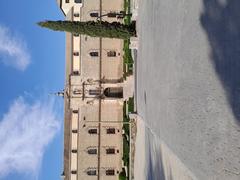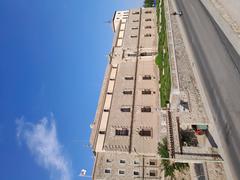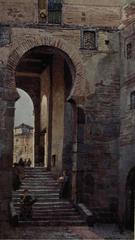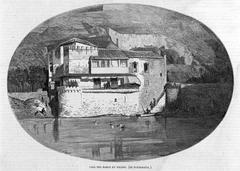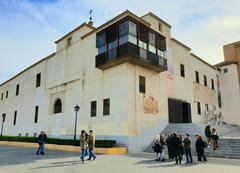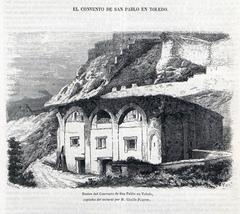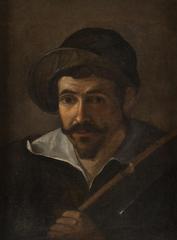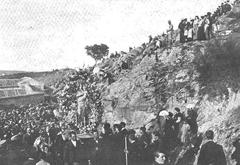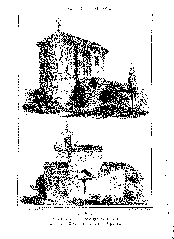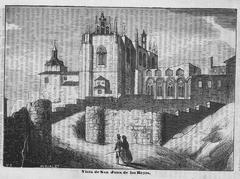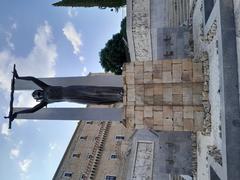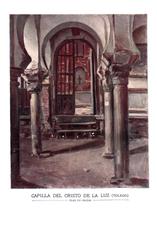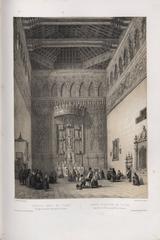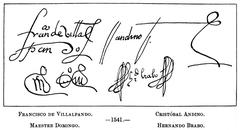
Complete Guide to Hospital de Tavera: Visiting Hours, Tickets, and Toledo’s Renaissance Heritage
Date: 15/06/2025
Introduction
The Hospital de Tavera, standing just outside the city walls of Toledo, Spain, is one of the most significant monuments of the Spanish Renaissance. Founded in 1541 by Cardinal Juan Pardo de Tavera, it was conceived as both a charitable hospital for the city’s poor and a mausoleum for its founder. Today, the Hospital de Tavera is a cultural landmark, renowned for its harmonious Renaissance architecture, exceptional art collections, and historical role in Toledo’s urban and social development (leyendasdetoledo.com; toledoguiaturisticaycultural.com).
This comprehensive guide details its history, architecture, visitor information, and tips to help you make the most of your visit to this unforgettable site.
Table of Contents
- Origins and Foundation
- Architectural Highlights
- Medical and Social Role
- Art Collections and Cultural Legacy
- Historical Transformations
- Visiting Hours, Tickets, and Accessibility
- Visitor Experience & Practical Tips
- Nearby Attractions
- Frequently Asked Questions (FAQ)
- Conclusion and Recommended Resources
Origins and Foundation
Commissioned by Cardinal Juan Pardo de Tavera, construction of the Hospital de Tavera began in 1541, at a time when Toledo was a thriving religious and political hub. The hospital was intended to serve the city’s poor and sick—particularly those excluded from the city’s inner hospitals—and its location outside the medieval walls near the Puerta de Bisagra (hence the name “Hospital de Afuera”) was both a practical response to public health concerns and a symbol of urban expansion (leyendasdetoledo.com; toledoguiaturisticaycultural.com).
Architectural Highlights
Designed initially by Alonso de Covarrubias and later completed by Bartolomé Bustamante and others, the Hospital de Tavera is one of the earliest examples of Italianate Renaissance architecture in Castile. Its imposing stone façade, symmetry, Doric and Ionic columns, and twin courtyards reflect the era’s ideals of harmony, proportion, and classical restraint (itinerartis.com; toledo-travelguide.com).
Key Features:
- Twin Courtyards: Peaceful, arcaded spaces providing light and fresh air, originally designed to promote healing.
- Monumental Façade: Balanced, classical lines crowned with the coat of arms of Cardinal Tavera.
- Church and Mausoleum: The church houses the celebrated marble tomb of Cardinal Tavera by Alonso Berruguete, a masterpiece of Renaissance funerary art (thebrainchamber.com).
- Historic Pharmacy: One of Spain’s best-preserved Renaissance apothecaries, with original Talavera ceramics and cabinetry.
- Library: Vaulted ceilings and rare manuscripts highlight the hospital’s role in intellectual as well as medical history.
Medical and Social Role
The Hospital de Tavera was a pioneering institution, among the first in Spain to operate independently of direct church control. It provided free healthcare to Toledo’s poor, cared for patients with both acute and chronic illnesses, and maintained a pharmacy, botanical garden, and library. Mental health patients were generally excluded except when suffering from physical ailments, reflecting the period’s limited medical understanding (leyendasdetoledo.com).
Art Collections and Cultural Legacy
The hospital evolved into a cultural repository, with an outstanding collection of paintings, sculptures, tapestries, and period furniture. Notable works include:
- El Greco: The hospital features in his iconic “View of Toledo” and his paintings are part of the collection (fundacionmedinaceli.org).
- Titian, Ribera, Tintoretto, Zurbarán: Masterpieces from the Spanish Golden Age and Italian Renaissance (toledo-travelguide.com).
- Berruguete’s Sepulcher: The marble tomb of Cardinal Tavera, blending naturalism and religious symbolism (thebrainchamber.com).
The hospital also houses the Archivo Histórico de la Nobleza, an important archive preserving centuries of Spanish aristocratic documents (itinerartis.com).
Historical Transformations
Throughout its history, the Hospital de Tavera has survived wars, including damage during the Spanish Civil War, and periods of decline and restoration. Managed variously by religious orders and foundations, it was declared a National Monument in 1904 and is now under the care of the House of Medinaceli Foundation (leyendasdetoledo.com; fundacionmedinaceli.org).
It has also served as a filming location for classic films—such as Luis Buñuel’s “Viridiana”—and is the subject of local legends, including tales of haunted crypts and mysterious doorknockers (toledoguiaturisticaycultural.com).
Visiting Hours, Tickets, and Accessibility
Current Visiting Hours (as of June 2025)
- Tuesday to Saturday: 10:00–14:30 and 15:00–18:30
- Sunday: 10:00–14:30
- Closed on Mondays
- Ticket Office: Closes one hour before building closing time (Turismo Castilla-La Mancha)
Admission Prices
- Full Entry (Museum, Church, Pharmacy): €6
- Partial Entry (Courtyards, Church, Sacristy): €4
- Guided Group Visits: Included with full entry; tours depart at set times
Tours
- Languages: Tours are primarily in Spanish, with English materials and some English-speaking staff available (Fundación Medinaceli).
- Duration: 45 minutes (see scheduled times on the official website)
Accessibility
The hospital is largely wheelchair accessible, with ramps and elevators serving most areas. However, some historic spaces, such as the crypt, have limited access due to stairs and uneven floors.
Visitor Experience & Practical Tips
Arrival and Flow
- Enter via the main Renaissance courtyard.
- Tour follows a structured route through courtyards, church, sacristy, museum, pharmacy, and (with a guide) the crypt.
Photography
- Allowed in exterior and courtyard areas; restrictions may apply inside the museum and church—check with staff before photographing.
Facilities
- Restrooms available
- No on-site café, but vending machines and water fountains are provided; numerous restaurants and cafés are nearby.
- Gift shop offers books and reproductions related to the hospital’s art and history.
Nearby Transport and Parking
- Located at Calle Duque de Lerma, 2, 45003 Toledo—close to Puerta de Bisagra and well-signposted (Fundación Medinaceli).
- 10–15 minutes’ walk from the train station or city center.
- Limited parking; public transit or walking is recommended.
Nearby Attractions
Hospital de Tavera’s location makes it a perfect starting point for exploring Toledo’s other treasures:
- Puerta de Bisagra Nueva: The grand city gate and symbol of Toledo (Trek Zone).
- Museo de Santa Cruz: Local art and history museum.
- Mosque of Cristo de la Luz: A rare example of Moorish architecture.
- Plaza de Zocodover: The city’s vibrant main square.
Frequently Asked Questions (FAQ)
Q: What are the Hospital de Tavera visiting hours?
A: Tuesday to Saturday, 10:00–14:30 and 15:00–18:30; Sundays 10:00–14:30; closed Mondays.
Q: How much are tickets?
A: €6 for full entry, €4 for partial entry; guided tours included with full entry.
Q: Are guided tours available in English?
A: Tours are mainly in Spanish; English materials are available and some staff speak English.
Q: Is the hospital wheelchair accessible?
A: Most areas are accessible; some historic spaces, such as the crypt, may have limited access.
Q: Can I take photos inside?
A: Photography is permitted in courtyards and public areas; check restrictions for the museum and church.
Q: Are there places to eat nearby?
A: Yes, cafes and restaurants are within a 5–10 minute walk.
Conclusion
Hospital de Tavera is a must-visit for anyone interested in Renaissance art, Spanish history, or architectural beauty. Its harmonious courtyards, remarkable art collections, and pivotal historical role make it a jewel of Toledo’s heritage. Plan your visit by checking official hours, reserving tickets in advance, and considering a guided tour for the richest experience.
Enhance your journey by downloading the Audiala app for audio guides, maps, and up-to-date visitor information. Don’t miss nearby sites such as the Alcázar, Cathedral, and the Jewish Quarter to complete your exploration of Toledo’s rich cultural landscape.

Image: The Renaissance courtyard of Hospital de Tavera, a prime example of Spanish Renaissance architecture.
Summary and Call to Action
The Hospital de Tavera stands as a testament to Toledo’s transformation during the Renaissance—a convergence of art, architecture, healthcare, and social welfare. From Cardinal Tavera’s vision to the masterpieces it houses, each aspect of the hospital invites discovery and appreciation (leyendasdetoledo.com; itinerartis.com). With convenient visiting hours, accessible facilities, and proximity to other major landmarks, it is an essential stop for any cultural traveler.
Download the Audiala app for interactive guides, stay updated on special events via social media, and browse related posts on our site to enrich your visit to Toledo.
References
- Leyendas de Toledo: Hospital de Tavera
- Toledo Guía Turística y Cultural: Hospital de Tavera
- Itinerartis: Hospital de Tavera
- Turismo Castilla-La Mancha: Hospital de Tavera
- Fundación Medinaceli: Hospital de Tavera
- Toledo Tourism Official Site
- The Brain Chamber: Tavera
- Toledo Travel Guide: Hospital de Tavera
- Trek Zone: Hospital de Tavera
- Spain.info: Tavera Hospital
- Turismo Toledo: Museo Duque de Lerma
- Wikipedia: Hospital de Tavera
